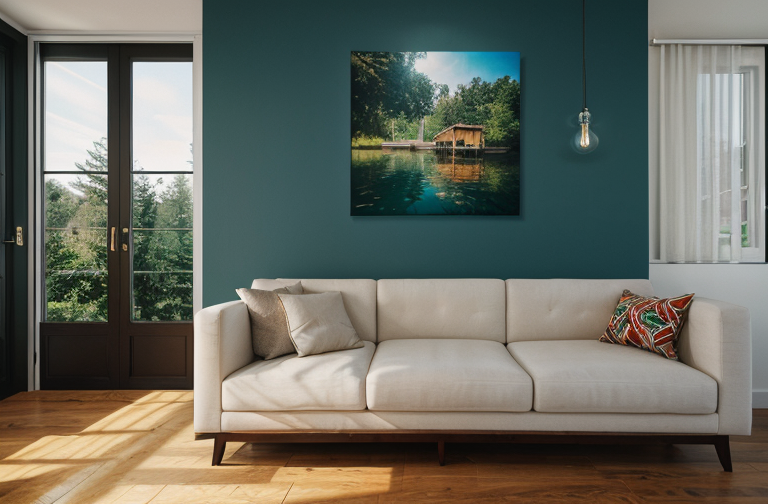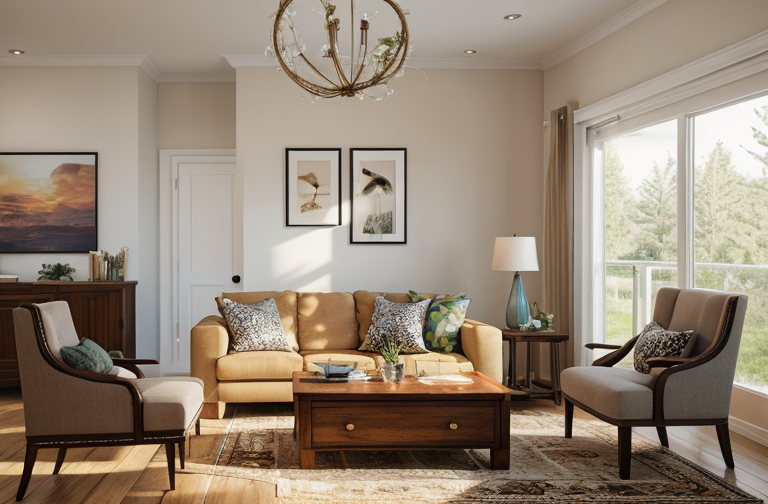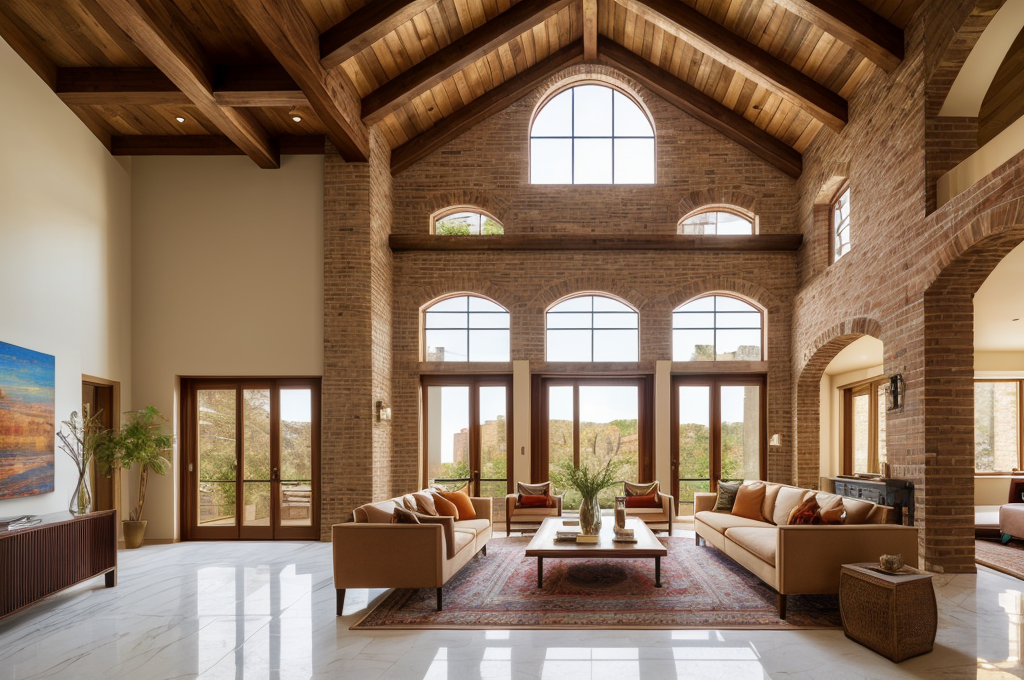An Insight into Modern Arabic Interior Design: Styles, Influences, and Key Features

This article explores Modern Arabic Interior Design Style, its principles and influences, key architectural features, furniture style, color usage, lighting elements, textile utilization, and unique decorative features.
Introduction to Modern Arabic Interior Design Style
With my love for all things interior design, I’ve developed an appreciation for different design influences from around the world. However, today I want to delve into a specific realm: the modern arabian style house interior design. 💖🏰
Understanding the Modern Arabic Interior Design Style
So what does modern Arabic design include, you ask? It can seem complex, with an intricate blend of warm and inviting color palettes, symbolic design elements, and a flair for dramatic luxury. It’s a fusion of cultural charm with modern minimalism that usually leaves me feeling both impressed and enchanted. 😀🎨
Influence of Islamic, Moroccan, Mediterranean, and Modernism styles
The modern Arabic style borrows inspirations from various design philosophies, including Islamic, Moroccan, Mediterranean, and Modernism styles. Each brings something unique to the table. Islamic and Moroccan designs contribute elaborate geometric patterns and dramatic proportions, awakening the senses like a melody of visual symphony. The Mediterranean style lends its inviting warmth, while elements of modernism ensure practical function. The blend is both sumptuous and harmonious, much like a beautiful dance. 💃✨
Characteristic features of the Modern Arabic Interior Design Style
Within modern Arabic interior design, there are key features to look for. You’ll recognize it by its warm and earthy color palette that exudes a royal appeal. The design elements are far from ordinary often symbolic, and enriched with intricate details. And, of course, there is no overlooking the luxurious allure of the style. It’s like stepping into a world that is as comforting as it is majestic.👑🕌
Indeed, the modern Arabic style isn’t a mere visual trend; it’s a celebration of culture and craft, following a meticulous narrative that narrates the enchanting tale of history and heritage.🤗📚

Influence of Arabic Cultural Values on Home Layout
As an interior design aficionado, I’ve always been captivated by the intermingling of cultural values and aesthetics within residential spaces. When designing arabic house interior design, one must be cognizant of the unique cultural values that influence the home layout significantly.
Role of Family and Peace in Arabic Culture
In the beautiful tapestry of Arabic cultural values, family gatherings and peace hold center stage. These values manifest themselves in the form of spacious, warmly intimate areas in their homes which are purposefully designed to encourage family bonding and induce calmness.
Influence on Space Arrangement in Arabic Homes
The space arrangement in Arabic homes is thoughtfully orchestrated to echo these sentiments. The priority isn’t just about creating aesthetically pleasing spaces, but also sculpting environments that foster family ties and radiate tranquility. Speaking from experience, there’s an inexplicable charming allure to these designs that’s both inviting and comforting.
Prominence and Characteristics of Family Gathering Areas
One of the key highlights in an Arabic home layout is the distinct prominence of family gathering areas. They aren’t just mere spaces, but rather, they are lyrical tales of their rich culture, often adorned with intricate designs and warm hues. But despite their ornate allure, these areas retain an underlying essence of simplicity and tranquility, embodying the peace so intrinsic to Arabic culture.
Through this understanding of Arabic cultural values and their influence on interior design, we can delve more deep into creating spaces that beautifully intertwine functionality, family values, and tranquility. In essence, Arabic house interior designs are more than just an aesthetic showcase, they are a celebration of cultural values and familial bonding.

Traditional Architectural Elements in Modern Arabic Interior Design
I’ve always admired the richly layered textures, intricate patterns, and the unique character of Arabic interior design. Oozing centuries old charm, these interiors often incorporate traditional elements into modern spaces. Adapting grand Islamic constructions for smaller interior spaces, such as the homes we might find in a 1940 house interior design, is a challenge that comes with its rewards 🏡.
Downsizing Grand Islamic Constructions for Small Interior Spaces
To add a touch of authenticity to your modern Arabic interiors, try infusing some key architectural features borrowed from Islamic constructions. Of course, adapting these grand elements to fit into the scale of your home décor might need a little finesse. However, through clever design maneuvers, we can bring the grandiosity of Islamic architecture right into our homes.
Key Architectural Features Adopted from Islamic Constructions
From intricate geometric mosaics to varied patterns and stellar archways, distinct Arabic features can eloquently express the beauty of Islamic construction. Typically, you would find luxuriant arabesques fringed with floral designs, stunning tile work, and generously ornate wood carvings that embody the spirit of this architectural style in my projects.
Usage and Incorporation of Arches in the Design
Incorporating arches into the design is another beautiful way of enriching modern Arabic interiors. Arches are a common architectural feature in traditional Arabic design, be it a horseshoe, pointed, or multifoil arch. Integrating arches into your home design not only enhances the aesthetical appeal but also creates a sense of space.
By fusing these traditional elements into modern Arabic interiors, we can create spaces that exude charm, elegance, and authenticity. The judicious use of these elements creates an engaging narrative, which forms the essence of any captivating interior design story. Remember, a tastefully curated blend of old and new is often the secret to a truly enchanting space.

Signature Elements of Modern Arabic Interior Design
I especially love the arab house interior design due to its standout signature elements that give it a unique flare among other design styles.
Characteristics of Furniture Style
When it comes to the furniture style, it is a blend of old and new a fusion of traditional Arabic elements with modern lines. It results in pieces that are classic and yet contemporary; ornate, yet clean. Each piece is a statement in its own right, with complex designs woven into the ergonomic functionality.
Utilization of Colors in Design
The colors used in this style are a burst of warmth with an energetic dazzle. It isn’t uncommon to find variations of a single shade, creating depth and interest in seemingly simple spaces. These vibrant hues weave a tapestry that immediately draws your attention, making for an inviting and rich environment.
Lighting Elements and Textile Utilization
Lush fabrics and ambient lighting further add magic to the equation. Satin and velvet are the go to fabrics for their regal and luxurious appeal. Meanwhile, lighting often features Moroccan lamps and golden chandeliers, which not only illuminates a room but also serves as a central piece of artistry. It is this subline blend of light and texture that truly pulls together the distinctive vibrancy of Arab interior design.
Uncovering the science and artistry behind interior design styles such as Arabic design, encapsulates the essence of my passion, bringing spaces alive with thoughtful and meticulous detailing. It’s an amalgamation of our past, punctuated by modern aesthetics, giving rise to breathtaking spaces.
Other Key Aspects of Modern Arabic Interior Design
As a passionate interior designer, I’ve always been drawn to the mix of tradition and modernity in the arab house interior design. It presents an interesting juxtaposition of quaint cultural nuances and contemporary aesthetics reflecting an irresistibly captivating charm.
Muslim Cultural Practices in Design
With an inherent respect for the delicate intricacies of the culture, an arabian style house interior design also adheres to certain crucial Muslim norms. There are practices such as not wearing shoes indoors, that might seem minute but hold immense significance, blending in seamlessly with the overall ambiance of the space. It’s this attentive integration of cultural sensibilities into design that makes the Arabic interior design stand head to head with the western concepts like the 1940 house interior design.
Decorative Elements in Arabic Interior Design
Called to the stage next are the decorative elements, the charisma of which is akin to a well crafted melody. From painted plates and graphic tiles to heavy curtains and Islamic inscriptions – each decorative item has a story to tell. Similar to the engrossing narratives that enrich arabic house interior design, these elements work their magic to narrate tales of the land they grew out of.
Observations in Modern Arabic Interior Design
The beauty of modern Arab interior design lies in its uniqueness—celebrating traditional Arabic culture within a contemporary context, forming an intoxicating blend of the old and new. It’s a testament to the adaptability of design, how it can morph with changing times, yet preserve a taste of antiquity in its heart. Surely, this fusion is what sets modern arab house interior design apart, gracefully carving its own niche in the vast world of interior design.
So, whether you yearn for an abode singing songs of the past or a space humming contemporary tunes, Arabic interior design offers a symphony of both. Embracing history while keeping an eye on the allure of the modern world, it’s a harmonious dance of time and art unfolding before our eyes.
- Unlocking the Intricacies of Interior Design: Ranch-Style Homes and the Pursuit of Functionality
- Blending Tradition and Modernity: Exploring the Design of Nipa Hut and Trynagoal Tea House
- Enhancing Dining Experiences through Creative Interior Design and Rebranding in Burger Restaurants
- Mastering Home Renovation: The Crucial Roles of an Interior Designer and Effective Budget Management
- Understanding the Value of Interior Designers: Roles, Benefits, and Selection Process
- Exploring the Richness of Turkish Architecture and Interior Design through Adobe Stock and Pinterest
- Unveiling the Unique Characteristics and Design Elements of Ranch-Style Houses
- Embracing Openness and Personal Touch: The California Ranch House Interior Design Concept
- Embracing Warm Minimalism: The Rise of Brown Tones in Interior Design
- Enhancing Your New Home: Key Elements and Strategies in Interior Design
- Unveiling the Art of Luxury Interior Design: Exploration of Materials, Individual Style and Inspiration from Pinterest
- 13 Easy and Affordable Tips to Spruce Up Your Home Decor
- Exploring the Rich History and Distinctive Features of Tudor Architecture
- Exploring British Home Interiors: From Historical Evolution to Modern Adaptation
- Traversing the World of Interior Design: From Designer Profiles to DIY Ideas and Future-ready Furniture
- Contemporary Home Refinement: Leveraging Exposed Brick Design and Affordable, High-Quality Furnishings
- Exploring the Warmth and Charm of Modern Rustic Interior Design
- Enhancing Duplex and Triplex Interiors: An In-Depth Guide to Style, Lighting, and Effective Use of Space
- Creating Your Dream Bathroom: A Comprehensive Guide to Designs, Functionality, and Material Selection
- Creating Your Personal Spa: Insights into Modern Bathroom Design Trends



